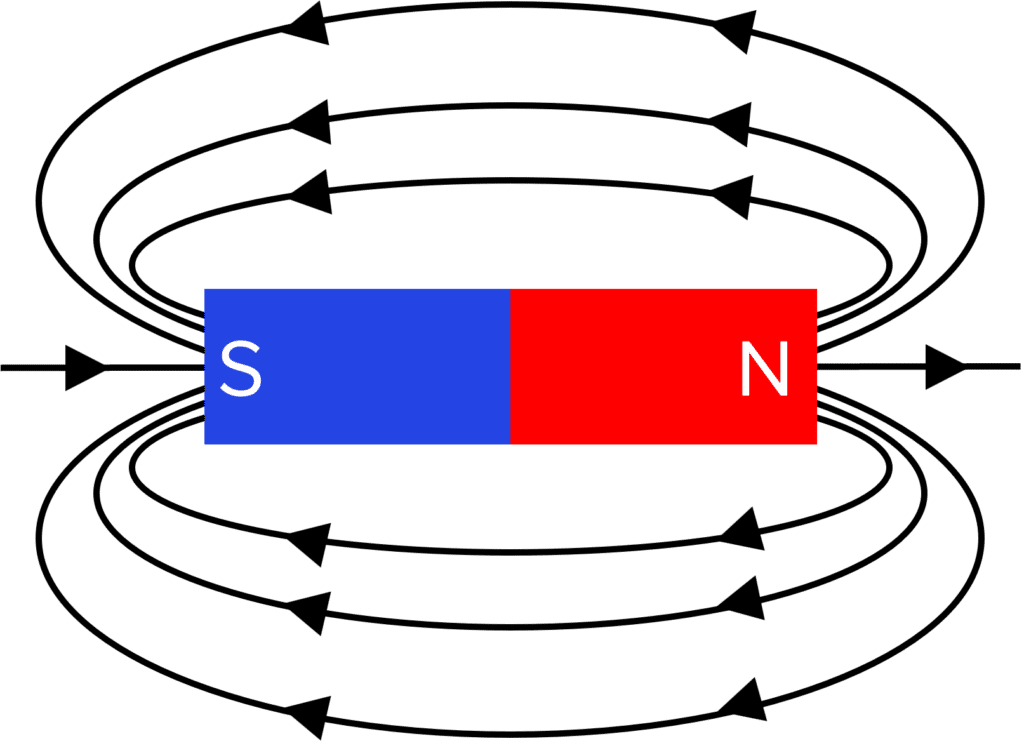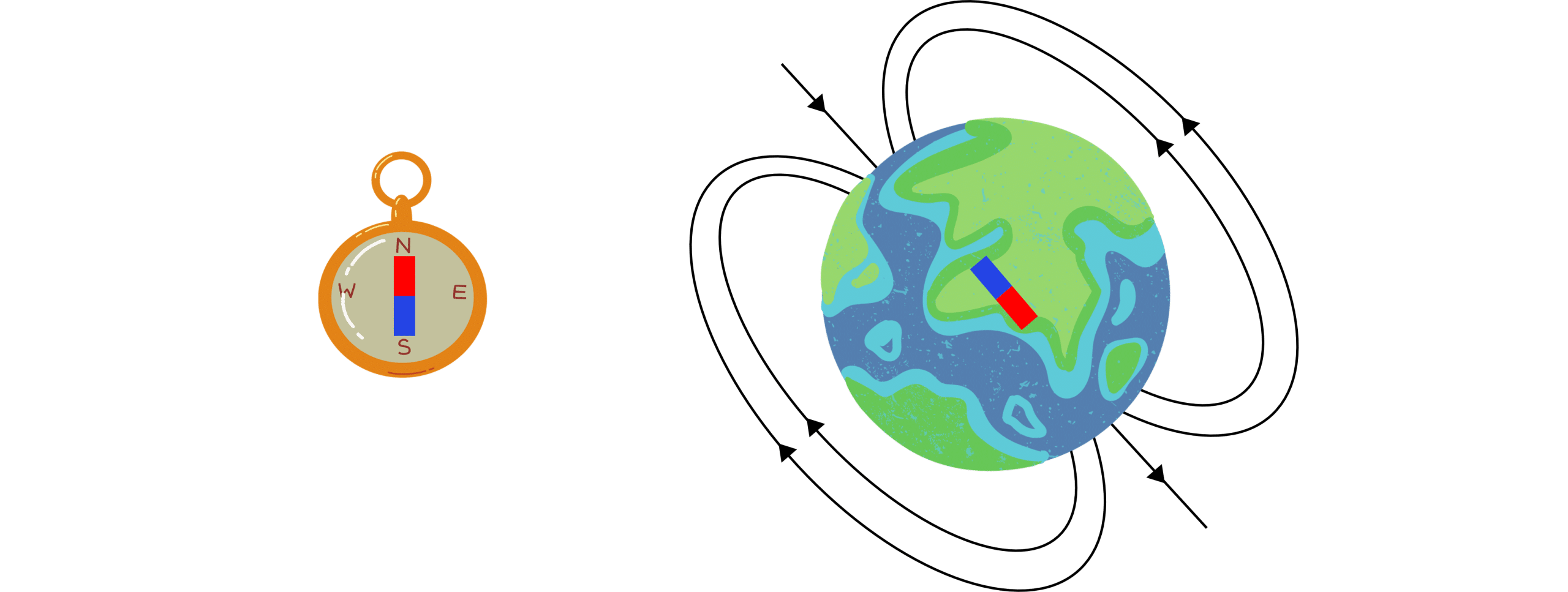Magnets
Magnets Revision
Magnets
Magnets produce magnetic fields. Magnetic fields exert a force on magnetic materials such as iron and steel. This force may be attractive or repulsive.
Magnetic Fields

All magnets have a north pole and a south pole. A bar magnet, such as the one in the diagram on the right, has the north pole on one side and the south pole on the other side.
Magnets produce magnetic fields, which are represented using field lines. Field lines always flow from the north pole to the south pole. The arrows on the field lines show the direction of the force of the magnetic field.
For example, in the diagram of a bar magnet, a north pole of another magnet would experience a force to the left hand side.
The closer together the field lines, the stronger the magnetic field. So we can see that on the bar magnet, the field is strongest directly next to the poles.
When two poles of two separate magnets are placed next to one another, they either repel or attract. Two unlike poles (one north pole and one south pole) attract whereas two like poles (two norths or two souths) repel. If a magnet is placed next to an object made from a magnetic material, the force is always attractive, no matter which pole is used.

Permanent and Induced Magnets
Permanent magnets are always magnetic.
Induced magnets become magnetic when placed in a magnetic field. They are otherwise not magnetic.
The force from an induced magnet is always attractive. The induced magnet quickly loses its magnetism when the magnetic field is taken away. Magnetic materials are just materials that can be turned into induced magnets.
Compasses
The Earth has its own magnetic field, like a bar magnet. A compass uses the Earth’s magnetic field for navigation.
A compass contains a tiny bar magnet, which aligns with the magnetic field of the Earth. If placed in another magnetic field, the compass will point in the south direction of the new magnetic field.

You can use a compass to investigate the magnetic field surrounding a magnet. Place the magnet on a piece of paper, and using the compass to find the direction of the magnetic field. Repeat this process in a range of positions on the paper and use your results to draw field lines to represent the magnetic field.
Magnets Example Questions
Question 1: Which direction do the arrows on magnetic field lines point?
[1 mark]
From the north pole to the south pole.
Question 2: Using field lines, how would you represent a weaker magnetic field?
[1 mark]
Draw field lines that are further apart.
Question 3: What is the difference between a permanent magnet and an induced magnet.
[2 marks]
Permanent magnets are always magnetic.
Induced magnets become magnetic when placed in a magnetic field.
Question 5: How does a compass always point north?
[3 marks]
The compass contains a tiny bar magnet.
The Earth has a magnetic field.
The bar magnet in the compass aligns with the Earth’s magnetic field.





